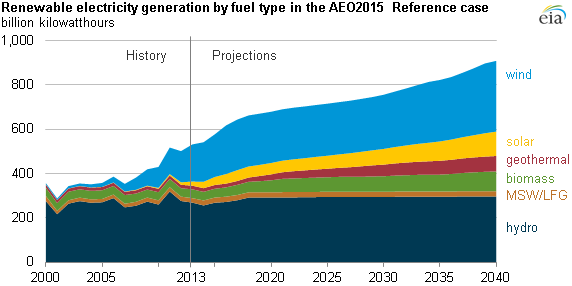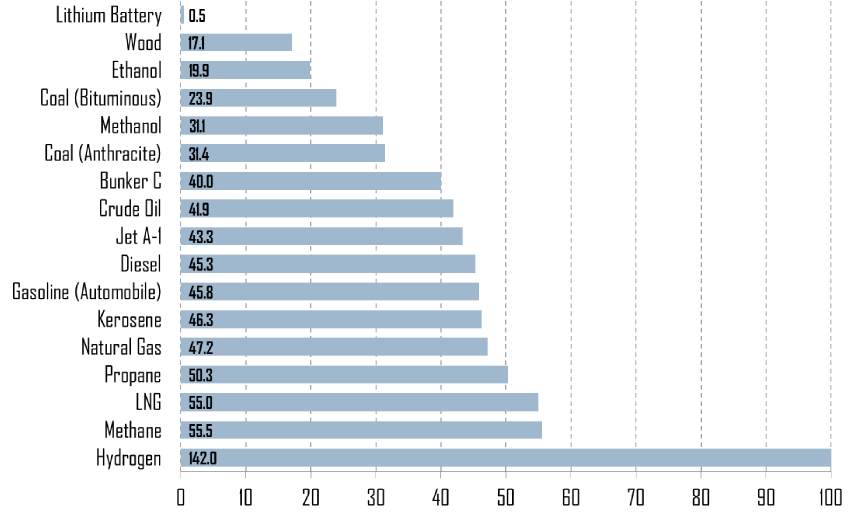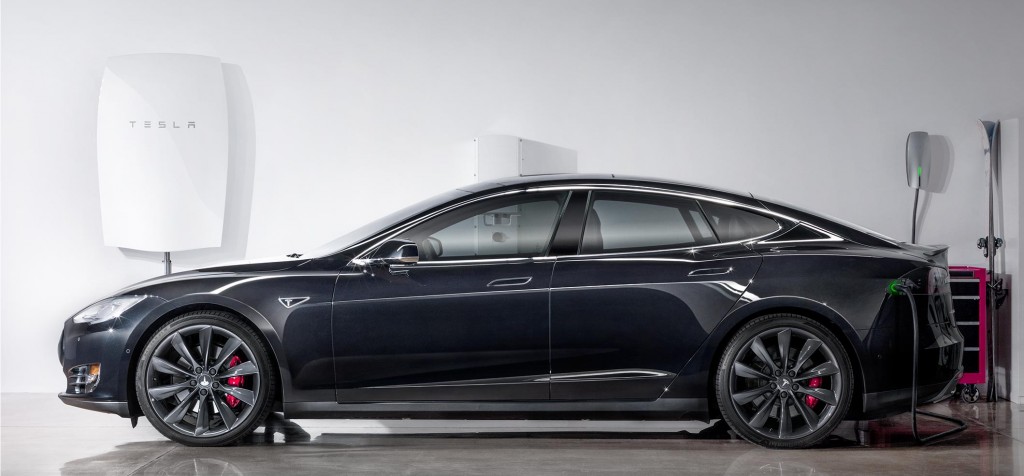Renewable Energy vs. Fossil Fuels: Sprint or Cross Country?
Last week Tesla Motors’ (ticker: TSLA) innovation-infused CEO Elon Musk unveiled the latest offering from the all-electric auto maker: a new home battery. This battery is an enlarged version of the battery used in Tesla electric cars and would be placed in homes to store electrical energy.

The benefit of this system is that homeowners can store power generated by renewable forms of energy (particularly PV solar power – photovoltaics) for later use, as opposed to selling it back to the grid. Giving solar power the ability to be stored means keeping a home powered from its own solar cells on a cloudy or rainy day.
This step – effective energy storage – has been seen by many as the “Holy Grail” of the renewable energy movement. It’s the one thing that is required to make intermittent forms of renewable electricity generation effective, because the wind doesn’t consistently blow and the sun keeps regular off-hours.
As we get closer to the date that storage is successfully and economically achieved for renewable energy it begs the question: “How close are renewables to replacing fossil fuels?”
Recently, the Energy Information Administration issued its 2015 Annual Energy Outlook and highlighted an increase in renewable energy we will see in the coming years.
 As noted in the OAG360 Chart of the Week, natural gas and renewable energy are expected to increase over the coming years, with increases in wind and solar becoming more heavy hitters. Dependent upon the pricing of commodities and availability of fossil fuels, there can be some play in this information as to the substitution effect seen between natural gas and coal, as well as the replacement effect of renewable energy.
As noted in the OAG360 Chart of the Week, natural gas and renewable energy are expected to increase over the coming years, with increases in wind and solar becoming more heavy hitters. Dependent upon the pricing of commodities and availability of fossil fuels, there can be some play in this information as to the substitution effect seen between natural gas and coal, as well as the replacement effect of renewable energy.
While this chart shows renewables gaining market share, it’s important to keep in mind that energy demand is expected to increase over the next 25 years and more baseload power supply will be needed to fill this demand. ExxonMobil (ticker: XOM), for example, believes global energy demand will rise by 35% by the year 2040. The International Energy Agency believes consumption will rise by 37% in the same time frame.
An Issue with Renewables: the Transfer of Energy
One obstacle that renewables have yet to successfully hurdle is the transfer of energy.
If a photovoltaic panel on the roof of your home is capable of generating, on average, 200 watts of power, not all that power can be captured and retained in a home battery.
“If you look at the efficiency of charging standard, nickel cadmium or nickel metal hydride battery, the efficiency is about 60 to 70%, so you’re wasting 30 or 40% of the energy you’re putting into the battery itself, and you’re probably also wasting some more energy in the charger because a charger won’t be 100% efficient,” as reported in an article from Cambridge University’s Institute of Continuing Education. “So, you might be looking at half the energy you’re using actually ending up in that battery.”
Ultimately, the loss in the transfer of energy prevents this from being a fully efficient process. Fossil fuels such as coal, natural gas and oil can be stored and utilized at any time, making them an efficient means of energy transfer.
Energy Density Drives the Planet’s Energy Use

Another way to assess the effectiveness of energy sources and measuring energy output is gravimetric energy density. This is a measurement of the amount of energy stored in a given system or compound per unit of volume or mass. In fossil fuels, this measurement is usually calculated in MegaJoules per Kilogram (MJ/Kg).
Just for a reference point, 1 MJ is roughly equivalent to 0.28 KiloWatt Hours (kWh), and kWh is a relatively common measure of energy output. One kWh will run your PC desktop computer with a 15” flat screen for 8 hours, or a 40 watt light bulb for 25 hours, or power a 10 gallon aquarium for about 33 hours.
The density of energy is important because future energy sources need to be cheap and scalable. The denser the energy source, the cheaper and more scalable it becomes. Manhattan Institute senior fellow Robert Bryce looks at this idea in his City Journal article entitled “Get Dense”.
An energy density chart shows various forms and energy and their relative energy density. Fossil fuels lead the way as the densest form of energy and they are among the most efficient.
If the life of fossil fuel use extends beyond the next 50 years, then they will continue to be the major global power source for the next half century. Once all known fossil fuel reserves have been fully utilized, will renewables then power the planet?
Ingenuity Steps Up: Localized Grid Storage Answers a Need in Maine
Convergent Energy+Power, a privately held, New York based energy storage technology developer, recently teamed up with Lockheed Martin (ticker: LMT) to design and deploy a battery storage solution for Boothbay, Maine. The goal was to provide the Boothbay area with reliable electrical power and to defer a transmission line upgrade that would cost many millions of dollars.
 Convergent says the 3 MWh energy storage system that it designed for Boothbay, Maine, will save 80% compared to the cost of upgrading power transmission lines.
Convergent says the 3 MWh energy storage system that it designed for Boothbay, Maine, will save 80% compared to the cost of upgrading power transmission lines.
“Upgrading the overloaded transmission line that connects the Boothbay Region to Maine’s broader electricity grid would have required extensive permitting and development, at five times the cost,” Convergent said in a press release. The Convergent Energy+Power storage system only takes about six months from procurement to commissioning.
The Boothbay Grid Storage System: How It Works
Convergent partnered with Lockheed Martin and C&D Technologies to engineer the integrated battery, power electronics and software system.
All of the system’s stored energy comes from the grid. The system charges at night (when excess energy is readily available and cheap), and is available to dispatch from 9am – 9pm each day to alleviate local congestion.
It is sized to deliver 500 kW to the grid for up to 6 continuous hours (total size: 3,000 kWh). Given that the average residential utility customer uses approximately 30 kWh per day, this is enough to power 100 houses for a full day.
The system is intended to reduce peak demand during hot, summer days (when the tourist population and electricity demand swell during festivals). Convergent’s system, at Central Maine Power’s request, is not intended to be used when the grid is down, but rather as a way to store off peak generated electricity for use when demand is high.
Convergent, with Lockheed Martin, designed and engineered the system utilizing C&D Technologies’ (a company that provides backup battery systems for nuclear power plants) advanced Valve-Regulated Lead Acid (VRLA) batteries, a highly advanced battery that is completely sealed, with the sulfuric acid stored in a series of spill-proof glass mats, with an enhanced electrode. More than 1800 batteries are incorporated into the Convergent system, running through five 100 kW Princeton Power inverters. The system is guaranteed to deliver 3,000 kWh capacity throughout its lifespan.
Unveiling Tesla’s “Powerwall”

Here is how the Associated Press described Elon Musk’s recent rollout of Tesla’s home solar power storage system: “Musk took the stage at Tesla’s design studio near Los Angeles International Airport, an audience of drink-toting enthusiasts cheering him on, in a scene fitting for an audacious dreamer renowned for pursuing far-out projects.” The article said that Musk said he “hopes to park hundreds of millions of large, solar panel-connected batteries in homes and businesses so the world can disconnect from power plants.”
Tesla’s Powerwall storage system is described on the Tesla Motors website as follows:
- Technology: Wall mounted, rechargeable lithium ion battery with liquid thermal control
- Models: 10 kWh $3,500 for backup applications; 7 kWh $3,000 For daily cycle applications
- Warranty 10 years
- Efficiency 92% round-trip DC efficiency
- Power 2.0 kW continuous, 3.3 kW peak
- Voltage: 350 – 450 volts;
- Current: 5.8 amp nominal, 8.6 amp peak output
- Compatibility: Single phase and three phase utility grid compatible

Oil & Gas 360 asked Convergent’s media spokesperson how its technology compares to Tesla’s residential energy storage system. Convergent said the grid storage system it designed for Boothbay is 300 times the size of the largest of Tesla’s Powerwall residential battery systems. The company said that it considers Tesla to be “one of several battery suppliers in the Lithium-ion space, and we have a solid working relationship with them.”
The Race is On
Advances such as the Tesla Powerwall home energy storage system and Convergent Energy+Power’s grid storage systems are steps in the direction of wider adoption of renewable energy, but renewables still have a long way to go to catch up with fossil fuels.
According to the U.S. Energy Information Administration, in 2014, the United States generated about 4,093 billion kilowatthours of electricity. About 67% of the electricity generated was from fossil fuels (coal, natural gas, and petroleum).
Major energy sources and percent share of total U.S. electricity generation in 2014 (source EIA):
- Coal = 39%
- Natural gas = 27%
- Nuclear = 19%
- Hydropower = 6%
- Other renewables = 7%
- Biomass = 1.7%
- Geothermal = 0.4%
- Solar = 0.4%
- Wind = 4.4%
- Petroleum = 1%
- Other gases < 1%
While innovative companies like Convergent and Tesla are helping harness the ability to more efficiently transfer energy, generating baseload power in a manner that is denser and cheaper is still a high hurdle. Especially compared to the low cost, efficient generation and transfer made possible by fossil fuels. In the meantime, Musk says he believes his company and others like it eventually will be able to sell two billion Powerwall type home battery packs globally.
Important disclosures: The information provided herein is believed to be reliable; however, EnerCom, Inc. makes no representation or warranty as to its completeness or accuracy. EnerCom’s conclusions are based upon information gathered from sources deemed to be reliable. This note is not intended as an offer or solicitation for the purchase or sale of any security or financial instrument of any company mentioned in this note. This note was prepared for general circulation and does not provide investment recommendations specific to individual investors. All readers of the note must make their own investment decisions based upon their specific investment objectives and financial situation utilizing their own financial advisors as they deem necessary. Investors should consider a company’s entire financial and operational structure in making any investment decisions. Past performance of any company discussed in this note should not be taken as an indication or guarantee of future results. EnerCom is a multi-disciplined management consulting services firm that regularly intends to seek business, or currently may be undertaking business, with companies covered on Oil & Gas 360®, and thereby seeks to receive compensation from these companies for its services. In addition, EnerCom, or its principals or employees, may have an economic interest in any of these companies. As a result, readers of EnerCom’s Oil & Gas 360® should be aware that the firm may have a conflict of interest that could affect the objectivity of this note. The company or companies covered in this note did not review the note prior to publication. EnerCom, or its principals or employees, may have an economic interest in any of the companies covered in this report or on Oil & Gas 360®. As a result, readers of EnerCom’s reports or Oil & Gas 360® should be aware that the firm may have a conflict of interest that could affect the objectivity of this report.







